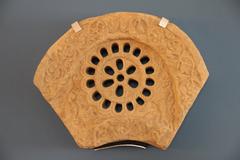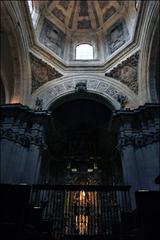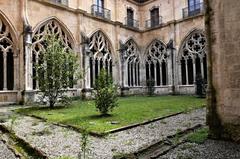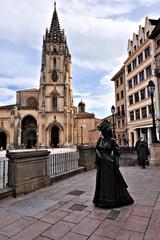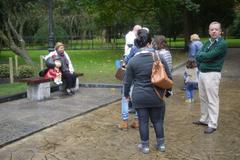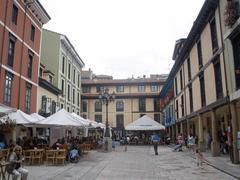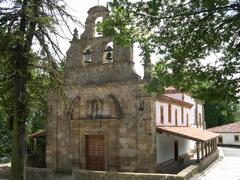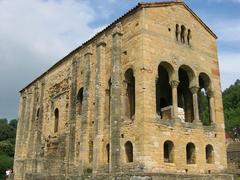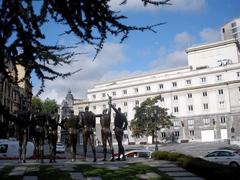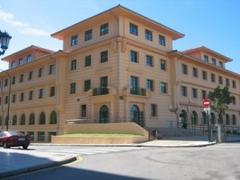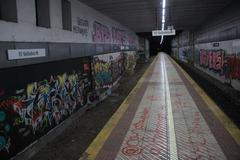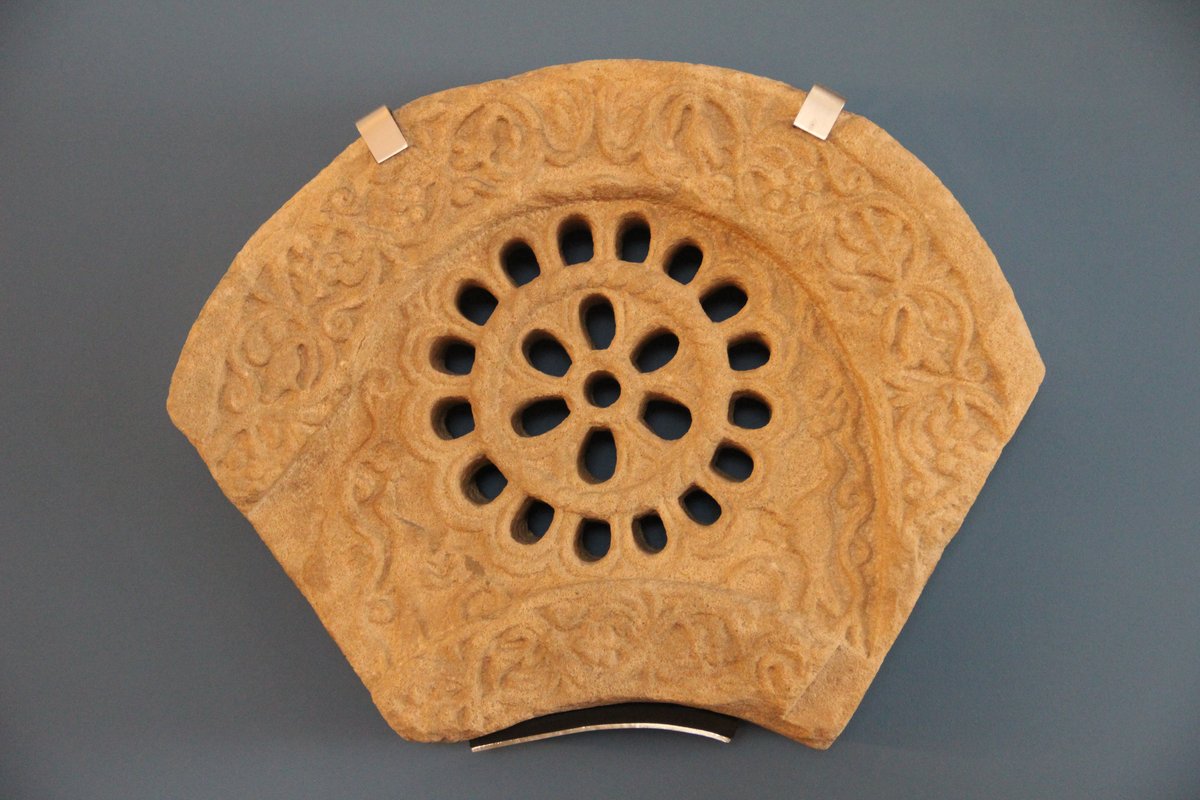
Cathedral of San Salvador Oviedo: Visiting Hours, Tickets, and Historical Sites Guide
Date: 14/06/2025
Introduction
Nestled in the heart of Oviedo, Spain, the Cathedral of San Salvador is a stunning testament to centuries of religious devotion, artistic achievement, and cultural significance. As Asturias’ spiritual center and a crucial stop on the Camino Primitivo—the oldest route of the Camino de Santiago—this cathedral is renowned for its blend of Gothic, Romanesque, and Baroque architecture. Its roots stretch back to a 9th-century basilica, and its UNESCO-listed Cámara Santa houses sacred relics such as the Sudarium of Oviedo and the iconic Crosses of the Angels and Victory. This comprehensive guide details everything you need for an enriching visit, including historical context, visitor information, accessibility, travel tips, and practical recommendations to make the most of your experience. (Explorial; Spain.info; Catedral de Oviedo; Lonely Planet)
Table of Contents
- Introduction
- Early Foundations and Pre-Romanesque Origins
- Medieval Expansion and Gothic Transformation
- Renaissance and Baroque Additions
- The Cathedral as a Pilgrimage and Cultural Center
- The Cámara Santa: Relics and Symbolism
- Visitor Information: Opening Hours, Tickets & Guided Tours
- Practical Travel Tips and Accessibility
- Special Events and Photographic Spots
- Nearby Attractions
- Facilities and Amenities
- Frequently Asked Questions (FAQ)
- Visual and Media Recommendations
- Conclusion and Key Takeaways
- References
Early Foundations and Pre-Romanesque Origins
The site of the Cathedral of San Salvador dates back to the time of King Fruela I (c. 781 AD), who established the original church as both a religious and political statement during the Christian Reconquista (Turismo Asturias). King Alfonso II the Chaste, Fruela’s son, commissioned a new basilica on the site, positioning Oviedo as a major center for Christian pilgrimage and royal authority (Wikipedia). The Cámara Santa, constructed under Alfonso II, is among the few surviving elements from this era and is now a UNESCO World Heritage site (Spain.info).
Medieval Expansion and Gothic Transformation
Between the 13th and 16th centuries, the cathedral underwent significant Gothic expansion. Its soaring pointed arches, rib-vaulted ceilings, and intricate stained glass windows exemplify the Gothic style, culminating in a single spire that rises nearly 80 meters above Oviedo (Barceló Guide). The main nave was designed to accommodate pilgrims journeying along the Camino de Santiago, and the elaborate façade features biblical carvings and statues of saints (Spain.info).
Renaissance and Baroque Additions
The cathedral’s extended construction brought together a harmonious blend of Renaissance and Baroque elements. The ambulatory and chapels reflect Renaissance influences, while the sacristy ceiling is adorned with dramatic Baroque frescoes. The Capilla de Nuestra Señora del Rey Casto, containing the Royal Pantheon, exhibits both Gothic portals and Baroque interiors. The main altarpiece, with its rich religious iconography, is an outstanding example of Gothic and Flemish artistry (Oviedo For 91 Days).
The Cathedral as a Pilgrimage and Cultural Center
The Cathedral of San Salvador holds deep significance on the Camino de Santiago, serving as the starting point of the Camino Primitivo, the oldest pilgrimage route to Santiago de Compostela (catedraldeoviedo.com). Its vast collection of relics earned it the title “Sancta Ovetensis.” The cathedral continues to be a hub for worship, cultural events, and community gatherings, shaping Oviedo’s religious and civic identity (comeamaviaja.com).
The Cámara Santa: Relics and Symbolism
At the heart of the cathedral is the Cámara Santa, a pre-Romanesque chapel built in the 9th century and now a UNESCO World Heritage Site (explorial.com). Its treasures include:
- The Sudarium of Oviedo: Believed by many to be the cloth that covered Christ’s face after the crucifixion, displayed publicly only three times a year (thecatholictravelguide.com).
- The Cross of the Angels: A 9th-century gold and jewel-encrusted cross, symbolizing Oviedo.
- The Cross of Victory: Associated with King Pelayo and the Christian Reconquista, and featured on Asturias’ flag.
- The Arca Santa: A reliquary containing important relics, including fragments of the True Cross.
These relics are central to the cathedral’s identity and Asturias’ Christian heritage.
Visitor Information: Opening Hours, Tickets & Guided Tours
- Visiting Hours:
- Winter (Oct–Mar): Mon–Sat 10:00 AM–6:00 PM
- Summer (Apr–Sep): Mon–Sat 10:00 AM–8:00 PM
- Sundays and Public Holidays: Closed for tourist visits; open for liturgical services (official schedule).
- Tickets:
- Cathedral entry: Approx. €6–€8
- Bell Tower access: Additional €8
- Discounts for children, students, seniors, and groups
- Tickets may be purchased online or on-site
- Guided Tours:
- Available in multiple languages, highly recommended for historical and artistic insights
- Audio guides are offered via a free mobile app in seven languages
Practical Travel Tips and Accessibility
- Accessibility: Main areas are wheelchair accessible; the bell tower and some museum sections involve stairs and are not accessible.
- Dress Code: Modest attire required (shoulders and knees covered); hats off inside; maintain silence during services.
- Photography: Permitted in most areas without flash or tripods; restrictions apply in the Cámara Santa and during religious services.
- Peak Times: Weekday mornings or late afternoons outside summer and major festivals are best for a quieter visit.
Special Events and Photographic Spots
The cathedral hosts key religious celebrations such as the feast of San Salvador and Holy Week, which provide unique cultural experiences. Photographers will find excellent opportunities in the cloister, illuminated chapels, and exterior façades—especially when sunlight streams through the stained glass windows.
Nearby Attractions
- Plaza de Alfonso II: The lively square at the cathedral’s entrance.
- La Regenta Statue: Celebrating Oviedo’s literary heritage.
- Museo Arqueológico de Asturias: Showcasing regional archaeology.
- Museo de Bellas Artes de Asturias: A short walk from the cathedral, offers a collection of fine arts.
- Historic Old Town: Explore Oviedo’s charming streets, shops, and cafes (Lonely Planet).
Facilities and Amenities
- Restrooms: Located within the cathedral complex.
- Gift Shop: Sells religious souvenirs, books, and crafts.
- Nearby Cafés and Restaurants: Abundant around Plaza de Alfonso II.
- Luggage Storage: Not available on-site; plan accordingly.
Frequently Asked Questions (FAQ)
Q: What are the Cathedral of San Salvador’s visiting hours?
A: Hours vary seasonally; typically open Monday–Saturday from 10:00 AM to 6:00 PM (winter) or 8:00 PM (summer). Closed to tourists on Sundays and holidays.
Q: How much are tickets?
A: General admission is €6–€8, with additional fees for the bell tower and discounts for eligible visitors.
Q: Is the cathedral accessible for visitors with disabilities?
A: The main nave and some chapels are accessible, but the bell tower and certain museum sections are not.
Q: Are guided tours available in English?
A: Yes, especially during peak season or by advance arrangement. Audio guides are also available.
Q: Can I take photographs inside?
A: Allowed in most areas without flash or tripods; restrictions apply in the Cámara Santa and during services.
Visual and Media Recommendations
Enhance your planning by previewing the cathedral with high-quality images and virtual tours on the official website. Use descriptive alt tags such as “Cathedral of San Salvador Oviedo Gothic Nave” and “Cámara Santa Holy Chamber Oviedo” for SEO and accessibility. Embedding interactive maps and linking to virtual walkthroughs can further enrich your experience.
Conclusion and Key Takeaways
The Cathedral of San Salvador in Oviedo is an architectural, spiritual, and cultural landmark that should not be missed. Its layered history—from pre-Romanesque origins to its soaring Gothic nave and Baroque embellishments—provides a window into Asturias’ past and present. The Cámara Santa and its relics highlight the cathedral’s enduring role as a center of pilgrimage, faith, and regional identity. Plan your visit by consulting up-to-date schedules and ticketing information, and consider guided tours or the official app to deepen your understanding. Take time to explore Oviedo’s surrounding historic sites and savor the city’s vibrant cultural life.
Download the Audiala app for offline access to this guide, and follow us on social media for the latest updates. Make your journey to the Cathedral of San Salvador a memorable chapter in your travels through Asturias.
References
- Explorial: Oviedo Cathedral Guide
- Catedral de Oviedo Official Website
- VisitOviedo.info: Cathedral Highlights
- Lonely Planet: Catedral de San Salvador
- Spain.info: Oviedo Cathedral
